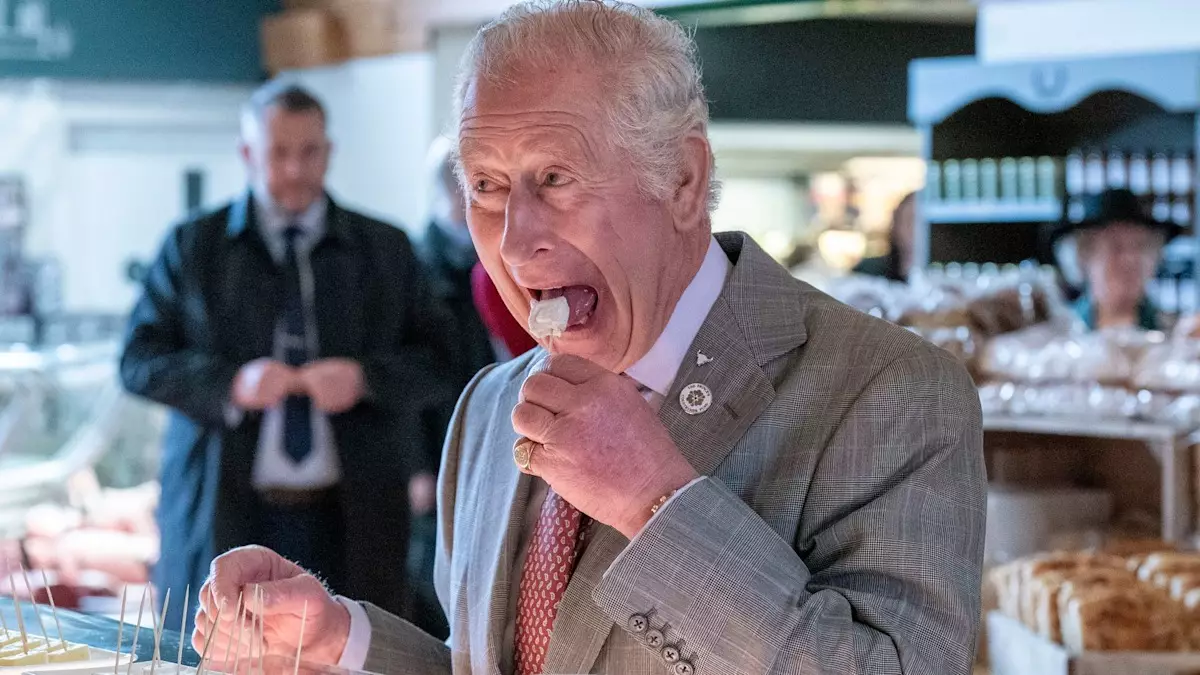Easter Sunday stands out as a beloved event in the royal calendar, reflecting a rich tapestry of tradition, family, and culinary delight. Historically marked by Queen Victoria’s iconic Easter egg hunts, this special day has evolved into a significant occasion for the contemporary royal family. Gathered in reverence and unity, the royals attend Easter services at St. George’s Chapel, setting the stage for a day infused with warmth and togetherness. The layers of meaning associated with this day extend far beyond merely attending church; it’s about immersing oneself in the familial bond, faith, and the pleasure of shared meals.
Eating together has always been a cornerstone of familial relationships, and for the royals, Easter Sunday provides a rare opportunity to break with their usual dining etiquette. Typically, the royal family enjoys a strictly formal approach to meals, often eschewing lunch entirely, but during Easter, the atmosphere transforms. This shift from the norm illustrates the balancing act of public duty and personal connections within the royal sphere.
A Feast for the Senses: The Royal Easter Menu
While many of us are entitled to our culinary curiosities, the specifics of the royal menu remain shrouded in a layer of exclusivity. In a rare glimpse behind the palace doors, former royal chef Darren McGrady has shared invaluable insight into the Easter feasting traditions of the family. True to historical roots, the royal family often enjoys roast lamb—a dish laden with rich symbolism. Rooted in Christianity, lamb serves as a powerful reminder of Jesus’s sacrifice, embodying both piety and culinary tradition.
McGrady, who had the privilege of cooking for royal dignitaries, shared that the late Queen Elizabeth II preferred her lamb cooked well, and it’s charming to picture her receiving the first slices on this meaningful day. How different it must be now, as King Charles takes the helm, having a palate that diverges sharply from his mother’s in dessert preferences. He’s not one for chocolate indulgence, contrasting with his mother’s sweet tooth. This creates a fascinating dynamic within the royal family, highlighting how personal preferences can shed light on the personalities behind the crown.
Culinary Ceremonies and Modern Family Traditions
The complete Easter royal dining experience goes beyond a single main course. Following the lamb, a platter of cheese and seasonal fruits takes center stage, featuring local specialties like Windsor Cheese and estate-grown peaches—a testament to the richness of British agriculture and the royals’ commitment to supporting local produce. If the lamb represents tradition, then the succulent fruits symbolize renewal; a poetic reflection of both Easter and the changing seasons.
Moreover, the allure of hot cross buns, traditionally enjoyed during afternoon tea post-lunch, exemplifies how culinary customs carry celebrations forward through generations. McGrady’s disclosures also underline the effort and care taken in preparing these delicacies. In a modern context, the royal family has kept Easter vibrant, especially for the younger generation. For Prince William and Princess Kate, orchestrating Easter egg hunts for their children adds an element of playful spirit. However, personal challenges, like Kate’s recent health concerns, momentarily disrupted these traditions, echoing the resilience of family while hinting at the underlying complexities of royal life.
Reflection on Modern Royalty
While the grandeur of royal celebrations lives on, there’s a refreshing air of normalcy interwoven into these traditions. Despite their elevated status, the royals showcase relatable human experiences—be it joyful gatherings filled with laughter, challenges that evoke compassion, or the unchanging allure of family meals. As they navigate public life and familial bonds, their celebrations present an inviting glimpse into a world that many admire yet seem far from grasping.
This unique blend of ancient customs and contemporary life captures the essence of what Easter signifies: rebirth, connection, and joy. The traditions may have evolved, but the unwavering spirit of family, faith, and feasting persists as they usher in Easter—a time for reflection and celebration within the royal household. As the royal family adapts and grows, one can only wonder how future generations will build upon these cherished customs, perpetuating a legacy steeped in love and togetherness during one of the most significant celebrations of the year.

